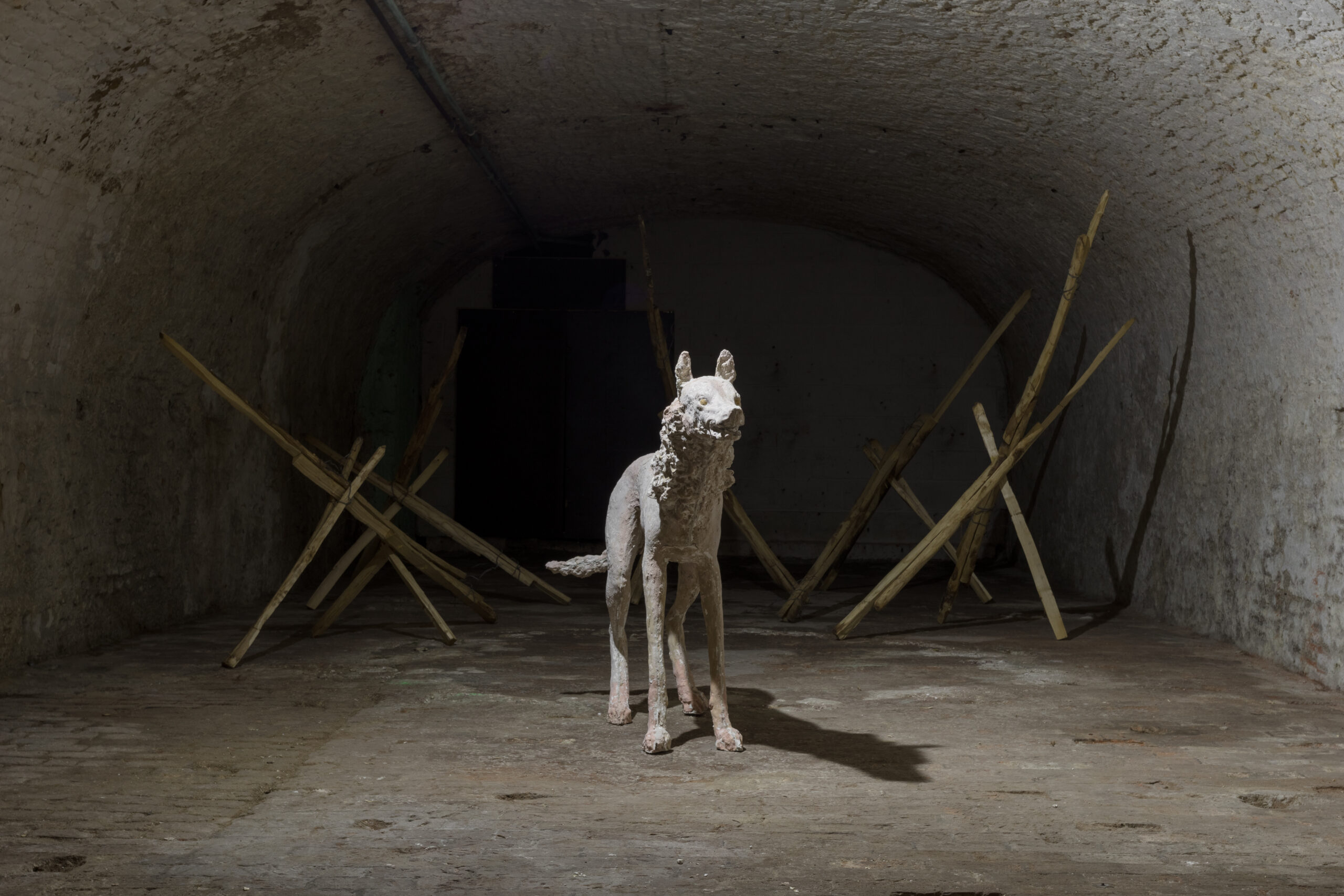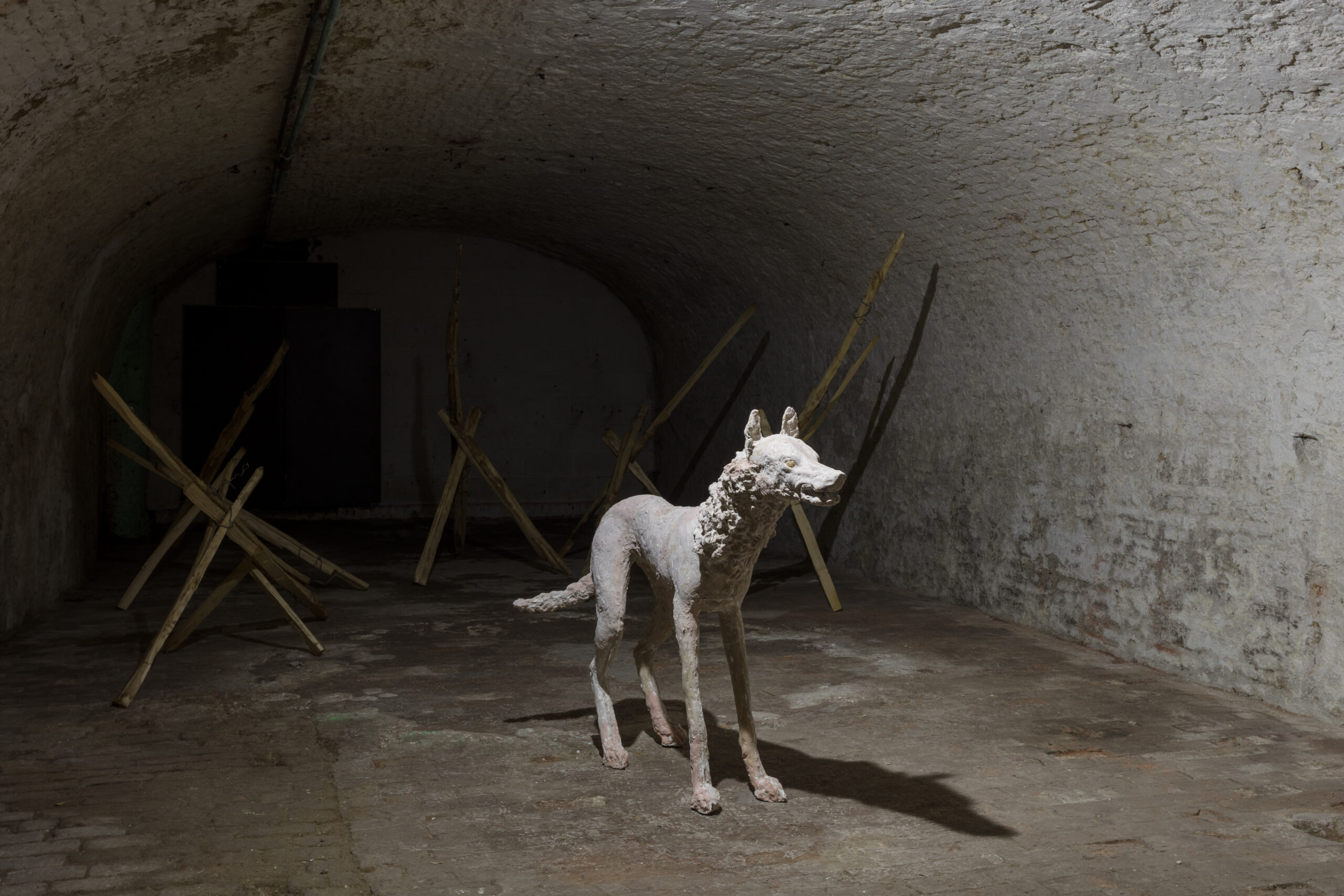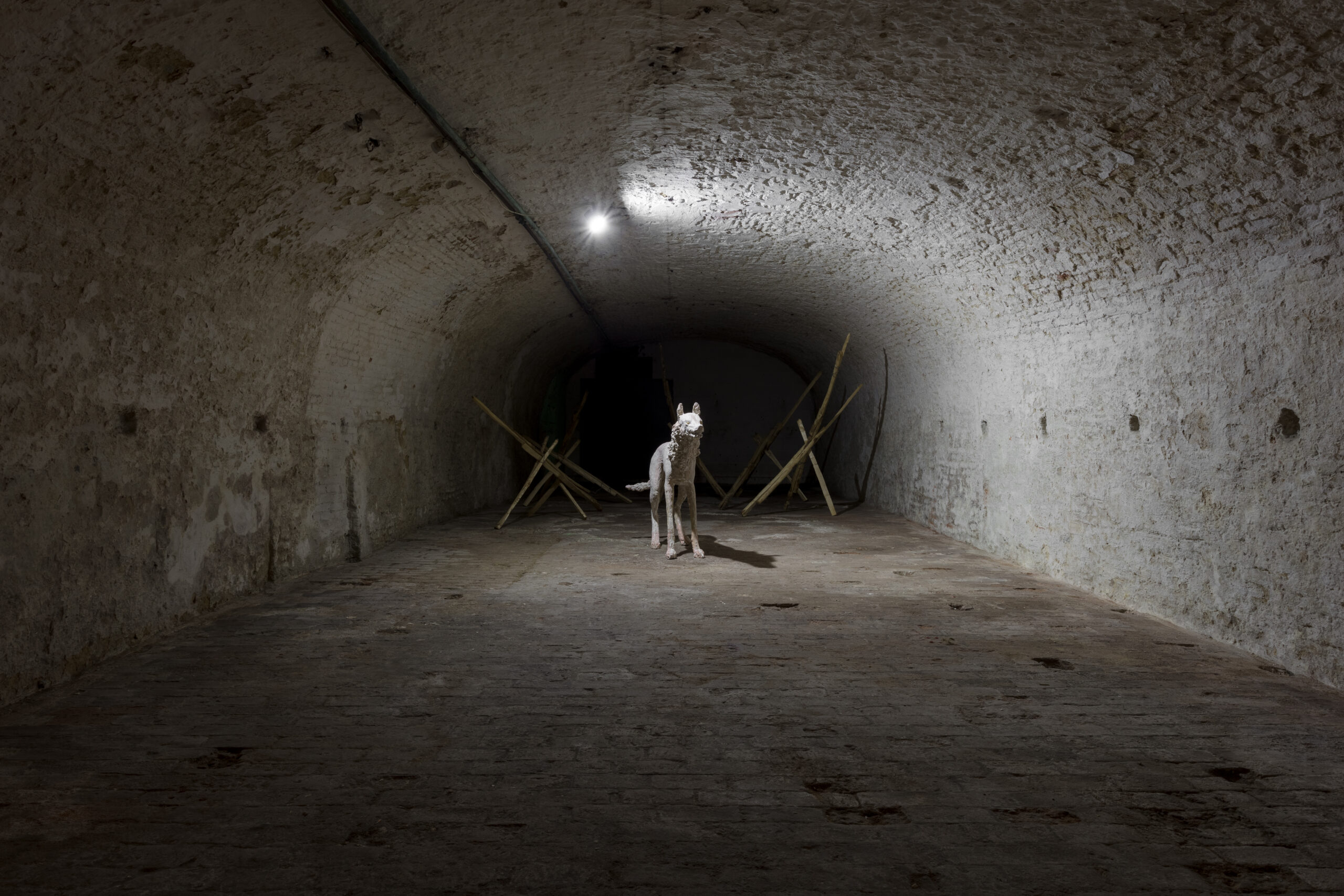2022 – home
CLAPTRAP
Hunger for Paradise
featuring Nora Aurrekoetxea, Antonia Brown, Pin Hui Chen, Jonas Dehnen, Tom Hallet, Azuli Peeters and Erika Velicka.
He ends the note with “Not a beginning not an end”. The whole thing started with him seeing a painting with three women picking things up. Easy to imagine him, hands behind his back with a nice cut coat on, looking. Later he mentioned it was the necessity he wondered about; why were they gathering scraps from a harvested field? Was it hunger, need, or pleasure?
The exhibition is the last show of CLAPTRAP. ‚Hunger for Paradise‘ ends a series of three years of exhibitions at the space, with a show that reflects on notions of protection, growth, decay, shapeshifting, and hunger.
Going underground to enter CLAPTRAP, one finds the work of Tom Hallet, a recent drawing paired with a latex floor piece knitted with the hair from his loved ones and filled with earth, plant seeds, and mushroom spores that’s been trying to bloom in the cellar for a month prior to the opening. In the arched space, a paintings by Jonas Dehnen based on his recollection of a small painting his parents used to have around when he grew up. And another one a couple chambers down which is part of his most recent series relating to primitive construction installations, small-scale models of shacks almost planking the painting with colour. Pin Hui Chen shows a 2m60-long table, titled “Mimicking The Diet Of Birds”. Birds can eat almost anything mostly attracted by colour. The piece relates directly to a show in Taiwan where she invites 10 people to sit around the exactly same-sized table for dinner, eating what we see here, 6 hours ahead of the CLAPTRAP opening. Its recording is displayed on the screen, linking the two shows in time.
Nora Aurrekoetxea works with slabs of concrete-based fabric (solidified after pouring water over the fabric), a paper-like structure curled and her cut-off braid turned into bronze. Human hair is oddly slow at decomposing, and our relation to it is often emotional; whether we cut our hair after a long relationship, or keep a strand of a child’s hair. Antonia Brown’s research piece is a perforated butterfly in silk painted with raw pigment. The piece is pulled up in her bodily and flower-like shapes while resembling everything in-between. A large PVC sheet print by Azuli Peeters, shows her camouflaged in a bush. It belongs to series on cinematography and the technology of disappearance; mid-protection and mid-survival through mimicking.
The stage, mid-darkness, holds a piece by Erika Velicka, who in her subtle and somewhat muted white sculptures questions what makes up a home. An elongated Chinese dragon- like mythologic woolf guards a wooden fence.
Only gleaners left alive.
text: Céline Mathieu 2022, photo. Silvia Capellari 2022




